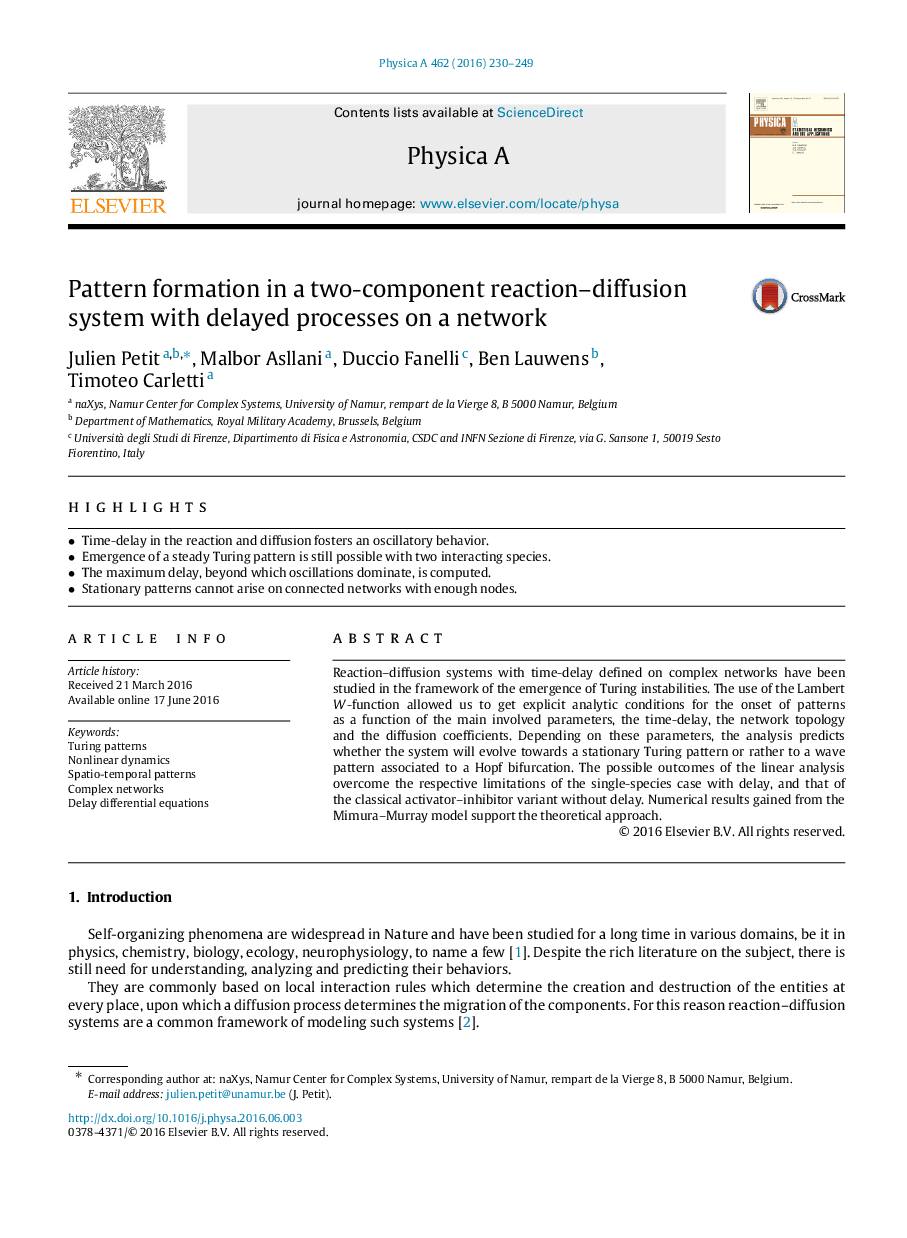| Article ID | Journal | Published Year | Pages | File Type |
|---|---|---|---|---|
| 7376912 | Physica A: Statistical Mechanics and its Applications | 2016 | 20 Pages |
Abstract
Reaction-diffusion systems with time-delay defined on complex networks have been studied in the framework of the emergence of Turing instabilities. The use of the Lambert W-function allowed us to get explicit analytic conditions for the onset of patterns as a function of the main involved parameters, the time-delay, the network topology and the diffusion coefficients. Depending on these parameters, the analysis predicts whether the system will evolve towards a stationary Turing pattern or rather to a wave pattern associated to a Hopf bifurcation. The possible outcomes of the linear analysis overcome the respective limitations of the single-species case with delay, and that of the classical activator-inhibitor variant without delay. Numerical results gained from the Mimura-Murray model support the theoretical approach.
Keywords
Related Topics
Physical Sciences and Engineering
Mathematics
Mathematical Physics
Authors
Julien Petit, Malbor Asllani, Duccio Fanelli, Ben Lauwens, Timoteo Carletti,
